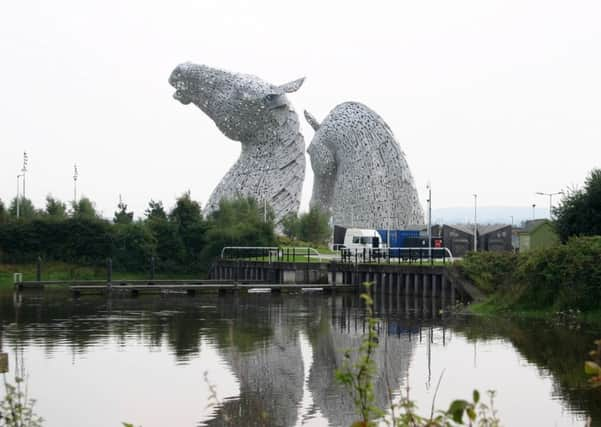Last leg of cast iron trip down the mighty Carron...


Guns, stoves, grates, baths and the rest left the works on a short stretch of canal towards the river at Carronshore to be loaded on to ships in the harbour which had operated there for over a century before 1759.
With Carron came a huge expansion in facilities, centred around the great loop in the river.
Advertisement
Hide AdAdvertisement
Hide AdA stone wharf with cranes appeared at the east end along with many new stores, including a granary, warehouses, workshops, a smithy, a pitchworks, a dry dock and a grandiose mansion, Carron House, for Charles Gascoigne, later to be Carron Company’s most powerful manager.
The house was later damaged by fire and is in a ruinous condition, although you can spot parts of it over the wall from the footpath that runs along the river from here to Glensburgh in Grangemouth.
In the grounds is another survivor, an unusual octagonal brick doocot much damaged over the years by neglect and vandalism.
Not far from this point is the Pow of Abbotshaugh where the East Burn of Falkirk falls into the Carron.
Advertisement
Hide AdAdvertisement
Hide AdLong before the harbour at Carronshore was constructed, this was the staple port of the town with ships sailing into the river to unload fine wines from the continent and other fancy imported goods demanded by the wealthy burghers of the town.
The river moves more slowly here across the flat lands of the carse in what were once great winding loops both north and south of the present course.
In the late 18th century Carron Company cut through these meanders to make the journey to the Forth shorter and accessible to larger ships.
A glance at a modern map, an aerial photograph, or observation on the ground quite clearly shows up the original course, marked out by tree lines and drainage ditches.
Advertisement
Hide AdAdvertisement
Hide AdIn the distance the Kelpies pop up above the trees guarding the point where the Forth and Clyde Canal now meets the Carron on the west side of the motorway.
The great canal might well have been called the Carron and Clyde since it originally entered the river some distance from the Forth and the old town of Grangemouth with its docks and harbours grew up in the space between the canal and the river.
Before we reach the Forth and the sea we have to pass under the Kerse Bridge – known to most folk as the Pay Brig – where travellers on the new turnpike road from Falkirk to Stirling had to pay a toll.
It was built around 1805 and had a central wooden drawbridge to allow ships to pass through. It was replaced in 1934.
Advertisement
Hide AdAdvertisement
Hide AdThe river is very tidal now and when the water is low the mud flats obscure its course which increasingly merges with the Forth.
The journey from the Meikle Bin in the far west is at an end. Fifteen miles of history which mark the progress of our forefathers from rural farmers harnessing the power of the river to grind their oats and barley to paper makers and industrialists supplying the world with iron ware of every kind and petro-chemicals of the modern age.
By bringing all these things to public attention, and working to preserve what we have today, our friends in the Communities Along the Carron Association have done us all a great service.
And, with continued support, I’m sure they will do so for many years to come.